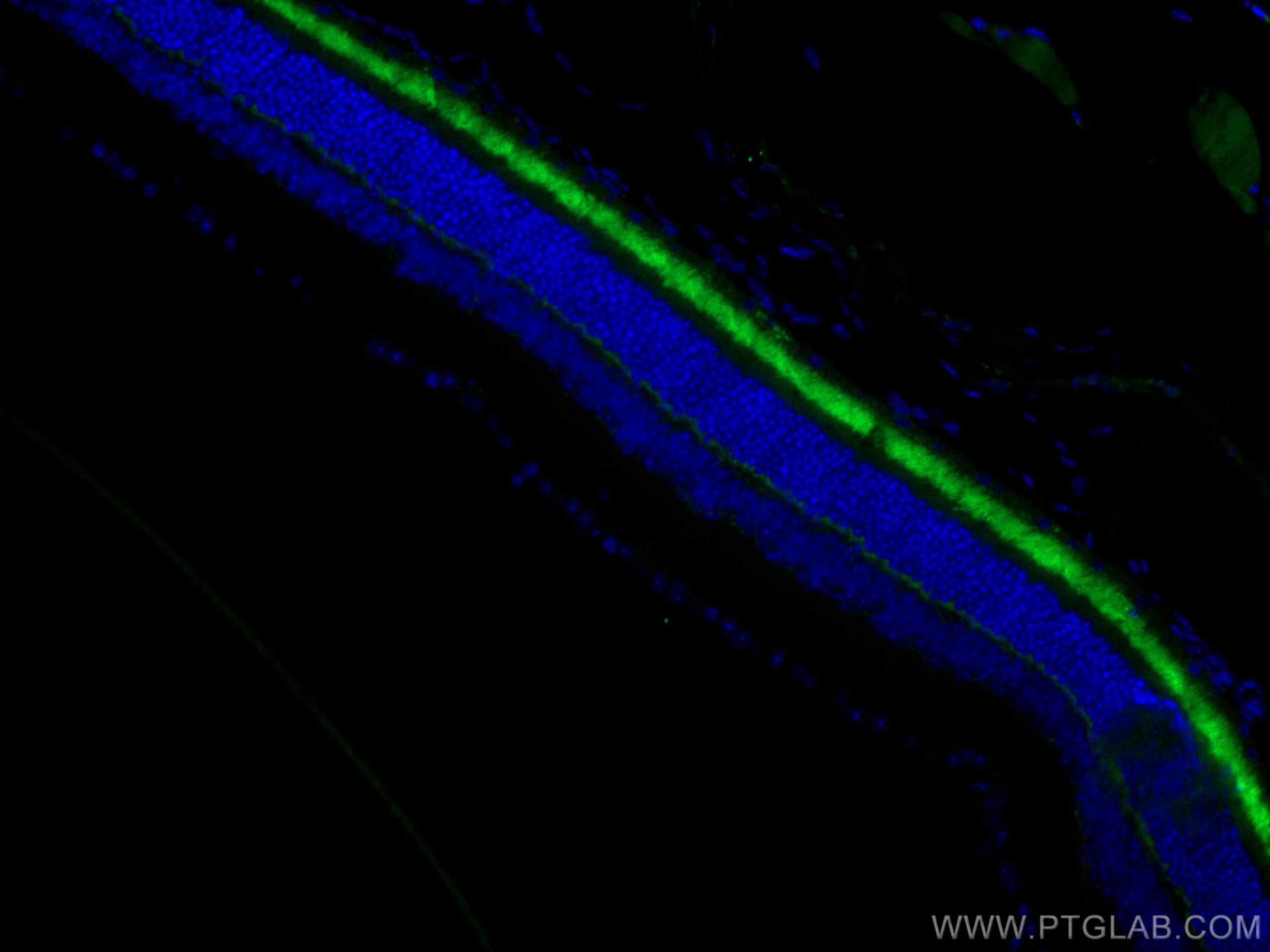验证数据展示
经过测试的应用
| Positive IF-P detected in | mouse eye tissue |
For other applications, we recommend the unconjugated version of this antibody, 67638-1-Ig
推荐稀释比
| 应用 | 推荐稀释比 |
|---|---|
| Immunofluorescence (IF)-P | IF-P : 1:50-1:500 |
| It is recommended that this reagent should be titrated in each testing system to obtain optimal results. | |
| Sample-dependent, Check data in validation data gallery. | |
产品信息
CL488-67638 targets ANO2 in IF-P applications and shows reactivity with Human, mouse samples.
| 经测试应用 | IF-P Application Description |
| 经测试反应性 | Human, mouse |
| 免疫原 | Peptide 种属同源性预测 |
| 宿主/亚型 | Mouse / IgG2a |
| 抗体类别 | Monoclonal |
| 产品类型 | Antibody |
| 全称 | anoctamin 2 |
| 别名 | ANO2, anoctamin 2, C12orf3, DKFZp434P102, TMEM16B, Transmembrane protein 16B |
| 计算分子量 | 114 kDa |
| GenBank蛋白编号 | NM_020373 |
| 基因名称 | ANO2 |
| Gene ID (NCBI) | 57101 |
| RRID | AB_2919512 |
| 偶联类型 | CoraLite® Plus 488 Fluorescent Dye |
| 最大激发/发射波长 | 493 nm / 522 nm |
| 形式 | Liquid |
| 纯化方式 | Protein A purification |
| UNIPROT ID | Q9NQ90 |
| 储存缓冲液 | PBS with 50% glycerol, 0.05% Proclin300, 0.5% BSA , pH 7.3 |
| 储存条件 | Store at -20°C. Avoid exposure to light. Stable for one year after shipment. Aliquoting is unnecessary for -20oC storage. |
背景介绍
ANO2, also named as C12orf3 and TMEM16B, belongs to the anoctamin family. It acts as a calcium-activated chloride channel (CaCC), mostly in photoreceptors. It may mediate olfactory amplification in olfactory sensory neurons (OSNs) and light perception amplification in retina.
实验方案
| Product Specific Protocols | |
|---|---|
| IF protocol for CL Plus 488 ANO2 antibody CL488-67638 | Download protocol |
| Standard Protocols | |
|---|---|
| Click here to view our Standard Protocols |
